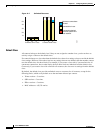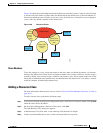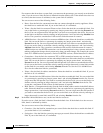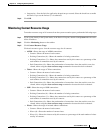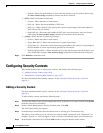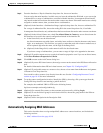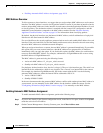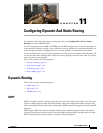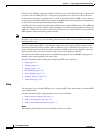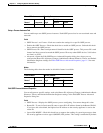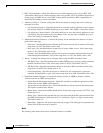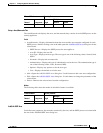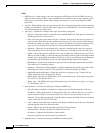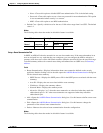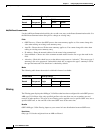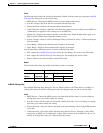
11-2
Cisco ASDM User Guide
OL-16647-01
Chapter 11 Configuring Dynamic And Static Routing
Dynamic Routing
If NAT is used, if OSPF is operating on public and private areas, and if address filtering is required, then
you need to run two OSPF processes—one process for the public areas and one for the private areas.
A router that has interfaces in multiple areas is called an Area Border Router (ABR). A router that acts
as a gateway to redistribute traffic between routers using OSPF and routers using other routing protocols
is called an Autonomous System Boundary Router (ASBR).
An ABR uses LSAs to send information about available routes to other OSPF routers. Using ABR type
3 LSA filtering, you can have separate private and public areas with the security appliance acting as an
ABR. Type 3 LSAs (inter-area routes) can be filtered from one area to other. This lets you use NAT and
OSPF together without advertising private networks.
Note Only type 3 LSAs can be filtered. If you configure the security appliance as an ASBR in a private
network, it will send type 5 LSAs describing private networks, which will get flooded to the entire AS
including public areas.
If NAT is employed but OSPF is only running in public areas, then routes to public networks can be
redistributed inside the private network, either as default or type 5 AS External LSAs. However, you
need to configure static routes for the private networks protected by the security appliance. Also, you
should not mix public and private networks on the same security appliance interface.
You can have two OSPF routing processes, one RIP routing process, and one EIGRP routing process
running on the security appliance at the same time.
For more information about enabling and configuring OSPF, see the following:
• Setup, page 11-2
• Filtering, page 11-8
• Interface, page 11-10
• Redistribution, page 11-14
• Static Neighbor, page 11-17
• Summary Address, page 11-18
• Virtual Link, page 11-19
Setup
The Setup pane lets you enable OSPF processes, configure OSPF areas and networks, and define OSPF
route summarization.
For more information about configuring these areas, see the following:
• Setup > Process Instances Tab, page 11-3
• Setup > Area/Networks Tab, page 11-5
• Setup > Route Summarization Tab, page 11-7
Modes
The following table shows the modes in which this feature is available:



